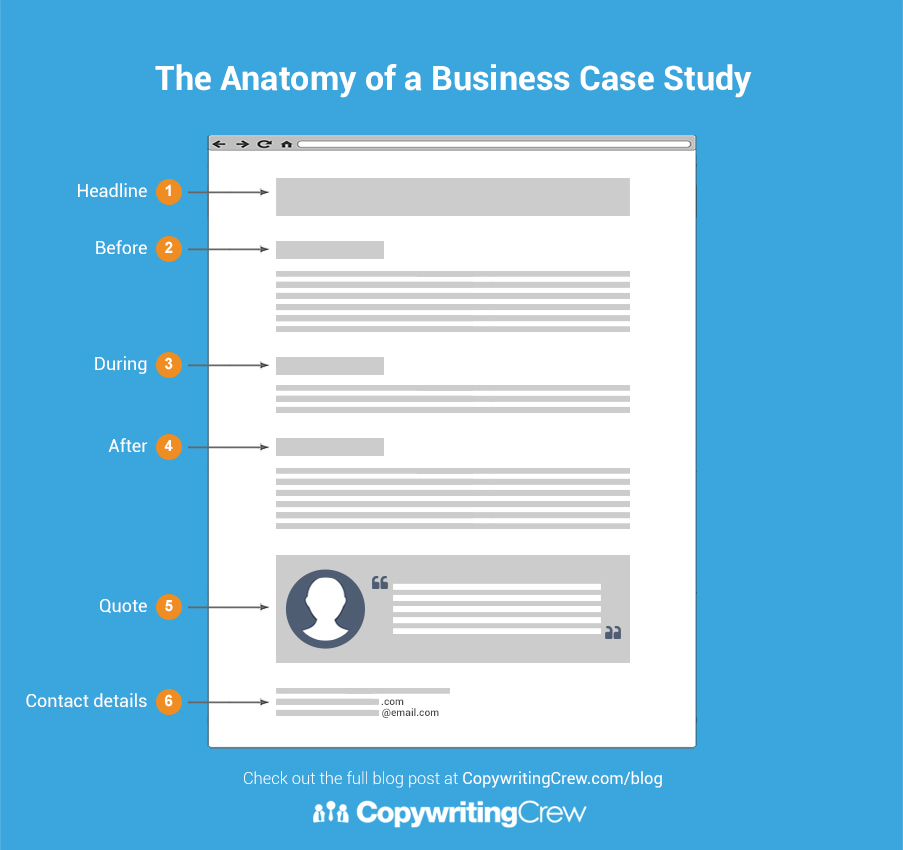
How To Write A Case Study For Business
Creating business case studies can be a great marketing tactic—they can help you increase your conversion rate, attract more clients and build trust. However, many business owners and entrepreneurs don't know how to write a case study for business.
If you're someone who would like help writing a business case study, then keep reading, because this brand new blog post article will walk you through the entire process, step-by-step!
What is a business case study?
A business case study is a story about how your company helped a client succeed. It's usually published on your website and can be used as marketing content to attract new clients. Case studies can be helpful for potential clients because they show how your company has helped other people and organisations succeed in the past.
Case studies are not just self-promotional pieces of content designed to make your business look good. The real purpose is to show potential customers how you can help them solve problems, overcome challenges, achieve specific results, and improve their lives for the better.
Why create a business case study?
Here are the four main reasons why you should consider learning how to write a case study for business, website and marketing materials.
Reason 1: Case studies can boost sales conversion rates
Case studies have been shown to boost sales conversion rates by up to 50%. This is because they provide third-party proof that your products and services are helpful to other people. They often share specific results, benefits or positive experiences and can be used to overcome objections as well.
Case studies are stories about your customers that can be useful for explaining how your product or service works to future customers who may be curious about your process.
Reason 2: Case studies help you build trust
Case studies boost your trust and credibility in the eyes of potential customers. They make your business appear more trustworthy because they share real-world success stories from relatable customers.
Case studies are powerful because they position you or your company as the "hero" in the customer's story, an expert or authority figure who helped them overcome their problems. Potential clients can't help but imagine themselves in your client's shoes, experiencing the same results.

Case studies help you build trust
Reason 3: Case studies help you stand out
Case studies help you stand out from the competition. They help you differentiate your business from the competition by showing positive outcomes that customers experienced from using your products or services.
Many businesses don't have case studies, usually for one of two reasons. Firstly, what they sell isn't very good and so clients are reluctant to endorse their business. Or, they have not put the time and effort required to collect useful case studies from their clients.
You don't have to fall into the same trap! You can follow the simple steps below and learn how to write a compelling case study for your business!
How to write a case study for business in 7 steps (with examples)
Here are the 7 steps we recommend business owners follow to identify which clients to ask for a case study, what questions to ask during an interview, and how to edit and format your case study.
1. Identify who your best clients are
The first important step is to identify who your best clients are. Your "best clients" are the ones who you know, or suspect:
- Were going through problems/challenges before working with you
- Achieved specific results from using your products and services.
- Are relatable to the kind of clients you want to attract
- Are happy for you to share their case study on your website and marketing
2. Interview or survey them.
For best results, we recommend interviewing clients over the phone, over Zoom, or in person. Video and audio case studies are usually more compelling and believable than written case studies (which are still effective). However, if you're feeling a bit shy, then you can always email them a list of questions, or an online form, for them to answer.
Here are some interview questions you might ask when interviewing clients for your business case studies. These questions are similar to the ones we ask when gathering client testimonials.
1. What were some of the challenges/problems you were going through before working with us?
2. What made you decide to work with us and not the competition?
3. What process did you go through when working with us? How did our product/service help you?
4. What specific results or outcomes have you been able to achieve?
Once you've interviewed your client and captured their story, the next part is turning the raw video, audio or text transcription into a compelling business case study that converts.

Interview or survey them
3. Follow a proven storytelling framework

The Anatomy of a Business Case Study
An effective business case study typically follows the before, during and after framework. The reason why this format is so powerful is that it's based on captivating storytelling. It starts with the problem or conflict, explains what was done about it, then shares the resolution.
In the previous step, we covered the right interview questions to ask your best clients. You may not have realised, but these are based on the 'before, during and after' framework. The storytelling formula that takes your readers and potential customers on a journey.
- What problems or challenges were you going through? (The before phase)
- What process did you go through? How did our product/service help you? (The during phase)
- What results have you been able to achieve? (The after phase)
4. Make your case study easy to read.
Did you know that most people don't "read" online? In fact, Jakob Nielsen reported that 69% of website visitors scan and scroll web pages.
What this means is that you need to design your case study so that it's easy to read for the majority of people who scan and scroll webpages without actually reading them.
The purpose of the design is to highlight the most impressive parts of the case study so they stand out and are immediately obvious to potential customers. Professional design elements not only make your case study easier to read, but also add credibility.
You can use the following design tips to create an outstanding business case study.
- Headings
- Sub-headings
- Quotes
- Short sentences
- Short paragraphs
- Bolded text
5. Include relevant images or videos
Adding relevant images or videos helps bring your case study to life. The right kind of images or videos not only grab the attention of potential clients, but also provide visual proof that the case study is from a real-life client and not some made-up person invented by the company.
What kind of images or videos should you add to your business case study?
- Smiling photos of your client
- Professional photos of you or your team
- Client logos or website banners
- Your product or service being delivered

Include relevant images or videos
6. Publish
After creating your case study, the next step is to publish it. In order to get the most out of your case study, publish it in places your target audience and potential customers are likely to visit.
You can repurpose your case study into different formats such as images, videos, and even audio. You can then publish the content as an article on your blog, on the reviews page of your website, and on social media platforms like LinkedIn, Facebook, Twitter and YouTube.
Before you hit 'publish' or 'post' anywhere, first ask yourself the purpose behind publishing the case study. Do you want to drive more email sign-ups? Promote a specific product, service, or event? Generate more leads or sales? Once you know the answer to this question, you can make sure the content around your case study is focused on achieving your publishing goals.
Here are a few real-life examples. See if you can guess the purpose behind each one.
As a blog post

Handled blog post
On the 'reviews' page of your website

Copywriting Crew reviews
To social media as an image

Copywriting Crew testimonial
7. Promote
Once you have published your case study online, it's time to drive eyeballs to your case study so you can convert more leads and website visitors into clients. Here are 6 proven ways you can use to distribute and promote your case studies(s) and attract more customers.
- Send an email to your database
- Paid advertising such as a Facebook Ad campaign
- Include it in your landing pages and sales materials
- Add it to your proposals
- Include it in your printed brochures or white papers
- Business Case Study Examples
Need help creating a captivating business case study?
Creating a captivating business case study can be a daunting task, but with the help of a professional writer, you can create winning case studies that will help you stand out from the competition.
Of course, you will need to do some work upfront before our writing team can get started. For example, we won't contact and interview clients on your behalf. If you haven't already, you'll need to get in touch with your clients to ask for an interview, capture it, then send us the video, audio, or written text files.
Our team of professional US-based writers and editors can turn your raw video, audio or text into compelling case studies that you can use on your website, social media and advertising. We can craft a business case study that is both informative and engaging. Contact us today to get started!
Frequently asked questions about case studies
What is a business case study?
A business case study is a story about one of your clients and how you solved a problem for them. It allows your prospects to see how your solutions address their needs. Your business case studies can also include benefits such as return on investment, cost savings or other metrics that prospects want to see.
What makes a good business case study?
A case study is a great way to make your complex products more real to your clients and can help improve their perception of your offerings. A case study has a beginning, a middle, and an end, with a conflict and a resolution.
Why create marketing case studies?
Creating marketing case studies can help you convert leads into customers by giving you an edge over your competitors and helping leads make more informed decisions. The key is to imagine what questions or objections are going through prospects’ minds when assessing your business and then create a case study that positions your products and services as the solution to their problems.
